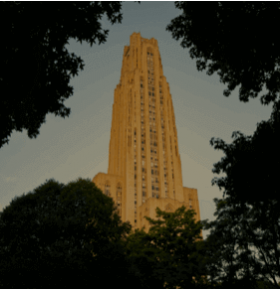
Subscribe to Pittwire Today
Get the most interesting and important stories from the University of Pittsburgh.Focusing on immunotherapy, cancer treatment and organ transplantation, the University of Pittsburgh is creating a hub to nurture and speed the development of new ideas and breakthrough technologies.
The work at 5000 Baum Boulevard will take place in an environment that combines research, innovation and entrepreneurship. The results could reinvent the way health care is delivered in such areas as transplantation, cancer and aging and chronic diseases.
5000 Baum in Pittsburgh’s Bloomfield neighborhood is expected to open in 2020. It will include the new Immune Transplant and Therapy Center (ITTC), which will be supported by a $200 million research investment to help UPMC and Pitt researchers translate findings into new solutions for patients.
“This initiative — and this incredible partnership with UPMC and the business community — is about building the right ecosystem to tackle some of medicine’s greatest challenges,” said Chancellor Patrick Gallagher. “It is both a bold look into the future of immunotherapy and a historic commitment — one that will decisively advance the University of Pittsburgh’s long legacy of leveraging knowledge for society’s gain.”

The University will renovate the century-old former Ford Motor Company assembly plant and showroom to transform it into a world-class space for labs, offices, startup companies and industry partners, aiming to attract the world’s best scholars and students.
“The ITTC represents an endeavor that is at the heart of UPMC’s mission — to develop and deliver life-changing medicine,” said UPMC President and Chief Executive Officer Jeffrey Romoff. “By investing in extraordinary people and groundbreaking research today, we will define tomorrow’s health care, right here in Pittsburgh.”
The 5000 Baum project is the largest of four recent Pitt projects aimed at growing the Pittsburgh Innovation District. Rebecca Bagley, Pitt’s vice chancellor for economic partnerships, said the district is where Pitt’s “cutting-edge ideas meet the business acumen and the financial resources to get them out into the world where they can benefit people.”
She added: “Education and medicine — eds and meds — are powerful forces in the region’s economy.”

Officials expect students to benefit from an influx of internship opportunities through companies working with the center as well the opportunity to establish their own medical startups.
“There will be jobs to work in labs and get exposure to research, as well as more in-depth training for students, including getting PhDs,” said Alison Morris, director of Pitt’s Center for Medicine and the Microbiome and a professor of medicine, immunology and clinical and translational research. “It will be an exciting opportunity for them to work in cutting-edge research with leading experts.”
While planning for 5000 Baum renovation moves ahead, ITTC-funded research has already begun. For example, researchers in one project are looking to eliminate the need for immunosuppressants in organ transplantation to avoid the long-term side effects patients currently face. Researchers also are developing personalized therapies that can be used to treat cancer effectively using their understanding of how tumor cells and immune cells interact with each other.
“Research is always done by a community, not just by one person, so our ability to bring them all together in this one place where they can really interact and collaborate, I think is going to bring a lot of synergy to the research,” said Mark Shlomchik, chair of Pitt’s Department of Immunology.

Wexford Science+Technology, which has developed similar innovation districts across the country and specializes in university and health care system partnerships, is collaborating with Pitt on the project.
“Buildings like 5000 Baum really are the lifeblood of communities,” said Thomas Osha, senior vice president, innovation and economic development at Wexford. “They provide jobs for those in the neighborhood and distribute innovations. We’ve seen Pittsburgh keeps hitting those top 10 lists, so we look forward in our partnership with Pitt and UPMC to be the top place for innovation.”
The building renovations alone are expected to generate about 2,000 local jobs, with additional opportunities in a variety of sectors to be created when 5000 Baum opens and begins its work of offering a dynamic and collaborative ecosystem for medical innovation.
“The history of this building is the perfect poetic backdrop for this effort,” Gallagher told about 200 community leaders, University officials, researchers and others at the February announcement of the initiative. “5000 Baum was built for the business of inventions that changed lives for the better. It is near impossible to imagine what our role would be like today without the Model T, and now this space will be used to tackle some of medicine’s greatest challenges.”
A new wave of economic development
A recent Brookings Institution report outlined steps Pittsburgh can take to leverage its strengths to transform into a global innovation city.
The newly created InnovatePGH’s efforts align with those recommendations, aiming to better connect the area’s expertise in life sciences research with companies that will bring innovative creations to market.
Innovation districts developed to harness the power of these collaborations can help to build a stronger, more sustainable and inclusive economy, said Rebecca Bagley, Pitt’s vice chancellor for economic partnerships.
The University has taken a leading role in the development of Pittsburgh’s innovation district. Recent milestones include:
December 2017: Purchase of the former Allegheny County Health Department Building on Forbes Avenue with plans to develop it as a center where companies can thrive alongside students and researchers, with Oakland as the district’s hub. In addition, the launch of LifeX, an initiative that will provide expertise, capital and working space in Pittsburgh’s Strip District to life sciences startups addressing the most complex challenges facing modern medicine.
Jan. 31, 2018: Groundbreaking for Murdoch Building property development on Forbes Avenue. New building will include space for Pitt’s collaboration among researchers and startups.
Feb. 13, 2018: Announcement of 5000 Baum. This mixed-use facility is where research can be done alongside clinical and industry partners.


